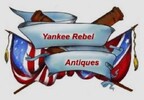 Loading... Please wait...
Loading... Please wait...-
Call us on (973) 810-2976
- My Account
- Gift Certificates
- Items / $0.00
All prices are in All prices are in USD
Categories
- Home
- Sold, Hold, Layaway items
- Revolutionary war Forged-iron Boat Hook, recovered at Ft. Ticonderoga (ON HOLD,N)
Revolutionary war Forged-iron Boat Hook, recovered at Ft. Ticonderoga (ON HOLD,N)
Out of Stock
Product Description
This is another nice early piece being offered, it is a Revolutionary War forged-iron boat hook. It measures 7 ½” x 3 ½” and forged from a single half-inch four sided piece of iron, having a small rectangular opening to attach to a wooden pole. It was found many years ago at Fort Ticonderoga, NY.
The initial purpose for these hooks was for latching onto smaller boats to pull to shore. But many were pressed into service during the Revolution as polearms, capable of pulling a rider from his horse and inflicting a fatal wound. See Collector’s Illustrated Encyclopedia of the American Revolution for a similar hook.
At the time of the French & Indian War, it was known as Fort Carillon, but during the Revolutionary War it was called Fort Ticonderoga. The Battle of Carillon was fought on July 8, 1758, during the French and Indian War (which was part of the global Seven Years' War). It was fought near the shore of Lake Champlain in the frontier area between the British colony of New York and the French colony of New France.
In the battle, which took place primarily on a rise about three-quarters of a mile from the fort itself, a French army of about 3,600 men under General Marquis de Montcalm and the Chevalier de Levis defeated a numerically superior force of British troops under General James Abercrombie, which frontally assaulted the entrenched French position.
That left the British and their allies vulnerable and allowed the French to win a complete victory. The battle was the bloodiest of the American theater of the war, with over 3,000 casualties suffered. French losses were about 400, while more than 2,000 were British.
The fort, abandoned by its garrison, was captured by the British the following year, and it has been known as Fort Ticonderoga ever since. This battle gave the fort a reputation for impregnability that had an effect on future military operations in the area. There were several large-scale military movements through the area in both the French and Indian War, as well as the Revolutionary War with the American Capture of Fort Ticonderoga and the British siege of the fort two years later.
This is a nice solid piece, with no rust or flaking. A light coat of varnish was applied for preservation.



